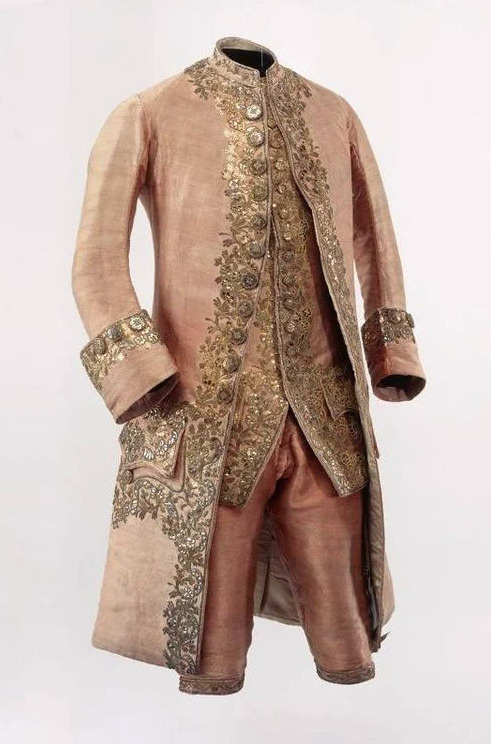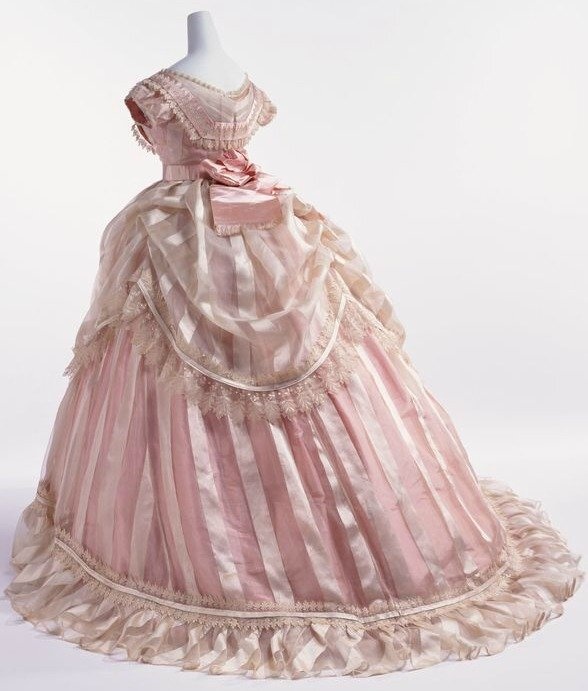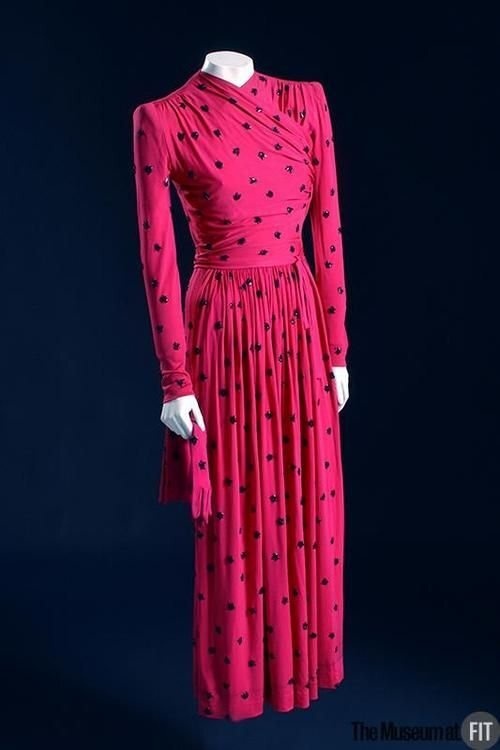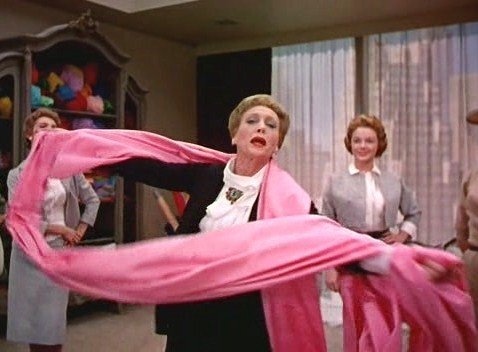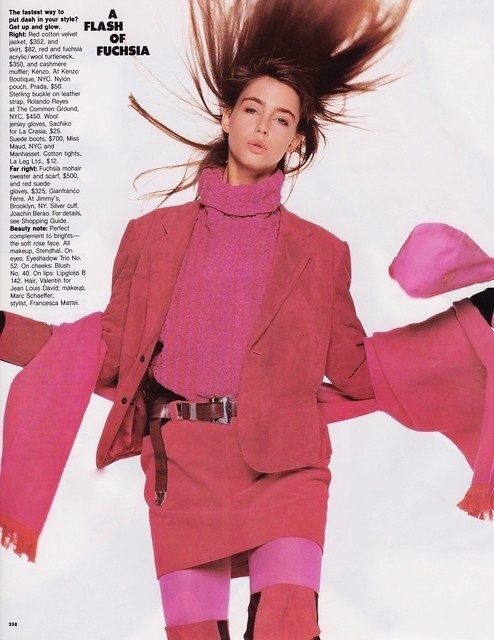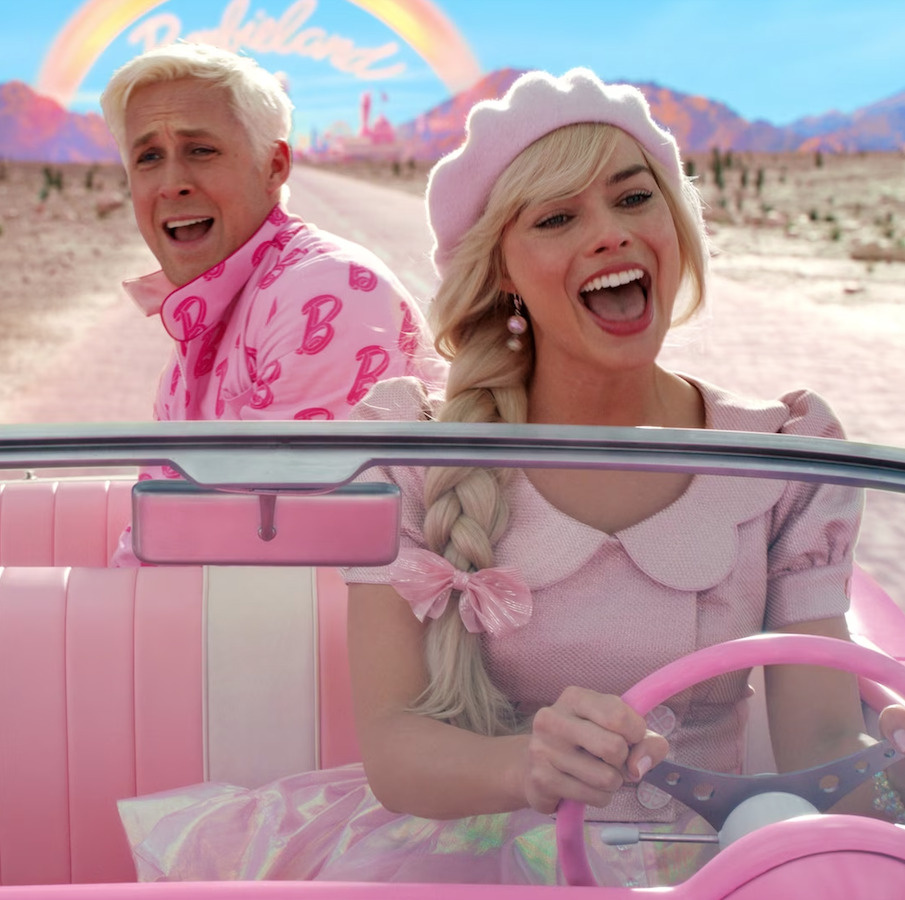Pink is my favorite color. When I was a little girl I wore pink often, my room was pink and my favorite toy was Pink Bear. I have never stopped loving this color and I feel I have to say that it isn’t because I am drawn to its connection to femininity, it’s because pink gives me visceral joy. I’ve worn it all my life.
Pink has long been associated with femininity in the world of fashion, but it didn’t start out that way. In recent years, many shades of pink have surged in popularity and—thanks to Barbie and Ken—pink is as big as ever.
From runways to street style, pink is no longer confined to being just a “girly” hue. It has strengthened to become a symbol of empowerment, self-expression and even protest.
Some wearable pink history
Worn by the upper classes of 18th-century European society, pink was a symbol of social status due to the relatively high cost and newness of pink dyes. Madame de Pompadour was so fond of the color that, in 1757, the porcelain maker Sèvres developed a hue called “Rose Pompadour” in her honor.
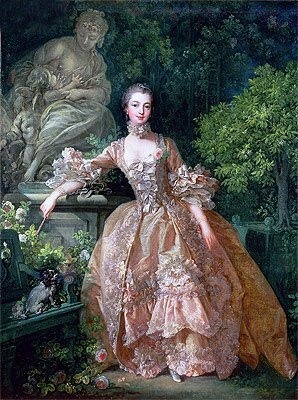
Madame de Pompadour, 1759 by Francois Boucher.
Although worn by women and men both, pink was often associated with masculinity until the 19th century.
18th-century (c.1780) man’s suit of pink silk, silver brocade and gold embroidery, via Swiss National Museum.
Around the middle of the 19th century, men in the Western world began to wear more dark, sober tones, leaving their female counterparts with more colorful and frilly options. This is when pink’s relatively recent association with women and femininity began.
1866 striped silk taffeta evening dress via Kyoto Costume Institute.
At the start of the 20th century, children wore white. In the World War I era boys started being associated with pink again. White was for babies, red was for soldiers, so a boy should wear pink, right? A 1918 trade publication by Earnshaw’s Infants’ Department, quoted by History Daily, stated: “The generally accepted rule is pink for the boys, and blue for the girls. The reason is that pink, being a more decided and stronger color, is more suitable for the boy, while blue, which is more delicate and dainty, is prettier for the girl.”
But then there was the jolt of a very un-dainty Shocking Pink developed by Elsa Schiaparelli in the 1930s. “The color flashed in front of my eyes,” Schiaparelli said, “a color of China and Peru but not of the West—a shocking color, pure and undiluted.”
Dress, Elsa Schiaparelli, c. 1940 via Museum at Fit.
Indeed, pink was worn in ancient India and Imperial China. In India, pink is understood as a color for all, symbolic of love and joy.
Bright pink is also the oldest known color in the world, discovered inside 1.1 billion-year-old rocks under the Sahara Desert. (“World’s oldest color found in ancient fossils,” science.org.)
Nevertheless, more somber hues replaced Schiaparelli’s shocking color throughout World War II.
After the war, gender-conforming roles were pushed, and the consensus was that pink was for girls. When Mamie Eisenhower wore pink for her inaugural dress in 1953, she cemented the color’s association with femininity.
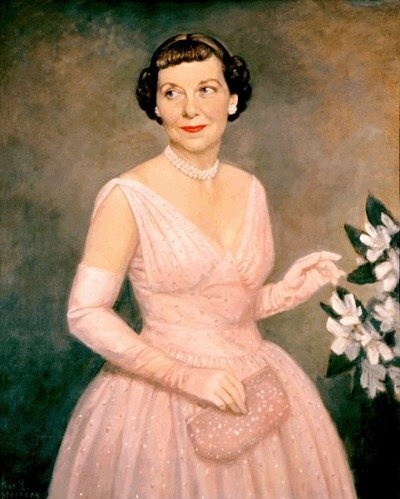
First Lady Mamie Eisenhower wearing a pink dress by Nettie Rosenstein, along with matching accessories, painted in 1953 by Thomas Stevens.
Also in 1953, Marilyn Monroe sang “Diamonds are a Girl’s Best Friend” in a pink gown so radiant that one might argue that pink was an even better friend than diamonds. And what about that paean to the hue, “Think Pink” sung by Maggie Prescott, the magazine editor in Funny Face (1957).
Kay Thompson brandishing pink as Maggie Prescott in Funny Face.
Pink was markedly feminine in the 1950s, and the robust economy of the U.S. meant there were not only pink clothes and toys for girls, there were even pink cars for women. You could buy a suite of pink kitchen appliances or have an all-pink bathroom.
With the women’s liberation movement of the 1960s and ’70s, there was a push for more gender-neutral tones, and even baby clothes went neutral. As reported in “The Surprisingly Recent Time Period When Boys Wore Pink, Girls Wore Blue, and Both Wore Dresses” (todayifoundout.com), “In the 1970s, the Sears and Roebuck catalog even went two full years without showing any toddler wearing pink, in stark contrast to a couple decades before.”
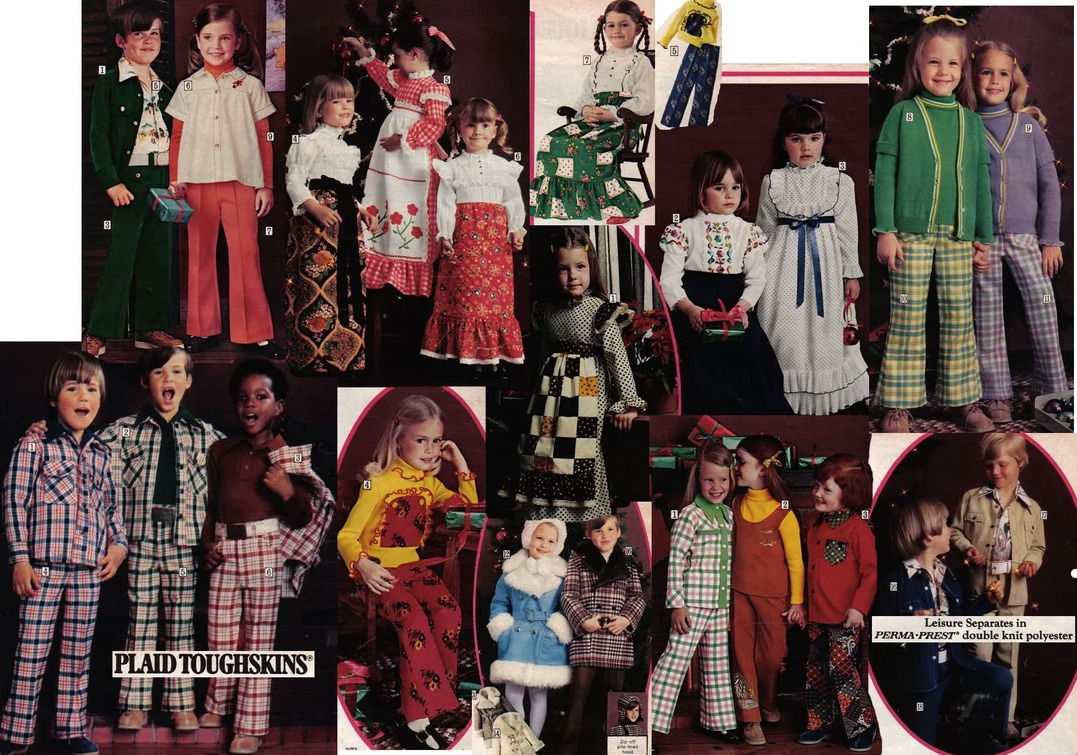
Sears catalog pages from 1975.
Editorial photo by Oliviero Toscani, Elle, 1987. Roberta Chirko, model. Via barbiescanner on Flickr.
The bright and bold 1980s saw a resurgence of pink, and not just for little girls. Barbie, who had come on the scene in 1959 wearing clothing worthy of a best-dressed list, began being associated with pink in the 1970s, and by the mid ’80s, fashion magazines even touted Barbie Pink as a major trend. In 1991, the Susan G. Komen Breast Cancer Foundation began symbolizing a show of support for ongoing research for a cancer cure with a pink ribbon.
The new pink-woman connection
Class, gender, commercial use…pink associations have been in perpetual flux. If you were born between 1980 and 2000, you may strongly associate bright pink with feminism. Think of the 2017 Women’s March, a worldwide protest movement against U.S. President Donald Trump. Remember those hats? Bright pink has become a symbol of women’s reproductive rights—it’s Planned Parenthood pink after all. At the same time Roe v. Wade was overturned, Valentino’s runway collection was primarily hot pink. CodePink uses a vibrant magenta to symbolize women working for peace. Flipping its connection with sweet femininity, pink has proven to be a powerful emblem for women.
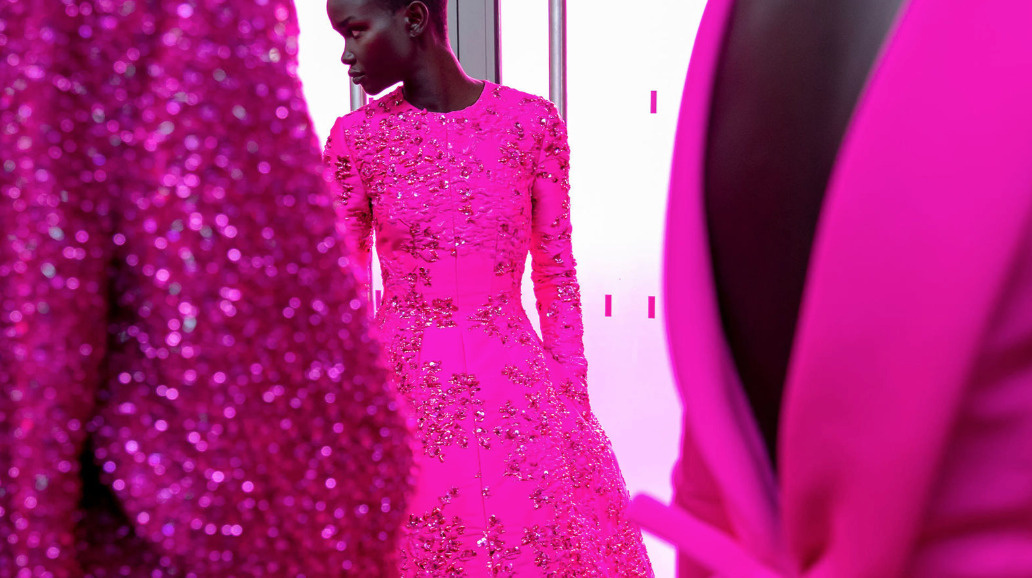
Courtesy of Valentino.
Besides women’s activism, pink has been adopted increasingly by the LGBTQ community. Starting in the 1970s, gay activists took to wearing a pink triangle as a defiant and proud symbol, diametrically referencing the very dark time when Nazis forced men they had labeled as gay to wear pink triangles. (“How the Nazi Regime’s Pink Triangle Symbol Was Repurposed for LGBTQ Pride,” TIME.)
Blame it on Barbie
In 2018-2019, The Museum at FIT held an exhibition entitled Pink: The History of a Punk, Pretty, Powerful Color, organized by the museum’s director and chief curator, Dr. Valerie Steele. It was (and is, by way of the accompanying book by Steele) an exploration of the historical context and the many meanings humans have given all shades of pink.
And so we come to Barbie in 2023.
Margot Robbie and Ryan Gosling in Barbie. As if you didn’t know.
Just the whiff of Greta Gerwig’s Barbie helped make “Barbiecore” fashion the major trend of 2022, according to Lyst’s “Year in Fashion” report. Now that Barbie is a blockbuster hit movie, it’s hard to see pink’s star fading. But what does pink mean in 2023?
Dr. Steele herself said, in an interview with CNN, “The 150-year-old notion of pink as synonym with fragile femininity brought forward by the West is being challenged. Pink is now having a ‘cool’ phase: It’s hip, it’s androgynous, it’s strong. And it’s here to stay.” Even since the FIT exhibition, she said, “we’ve seen the rise of millennial pink as an ‘It’ hue, but also its appropriation by feminists around the world as a powerful, socio-political mark.”
Referring to the trending bright pink, Katy Kelleher wrote, “It’s plastic, it’s neon, it’s fluorescent, it’s shocking, sexy, contemporary, and nostalgic all at once. It’s tacky on purpose, camp by design …Who wouldn’t want to pick the angriest, sexiest, loudest, oldest pink on the planet? (“Forget Pantone, Barbiecore Pink Is The Color Of The Year” Refinery29, last updated August 18, 2022.)
The last word goes to the stunningly original and prescient Elsa Schiaparelli, who described her shocking pink as “Bright, impossible, impudent, becoming, life-giving—like all the lights and the birds and the fish in the world put together.”
As a pink lover, I can only hope my favorite color keeps being fashionable, controversial…and powerful.
Written by Maggie Wilds/denisebrain
(The opinions expressed belong solely to the author.)
